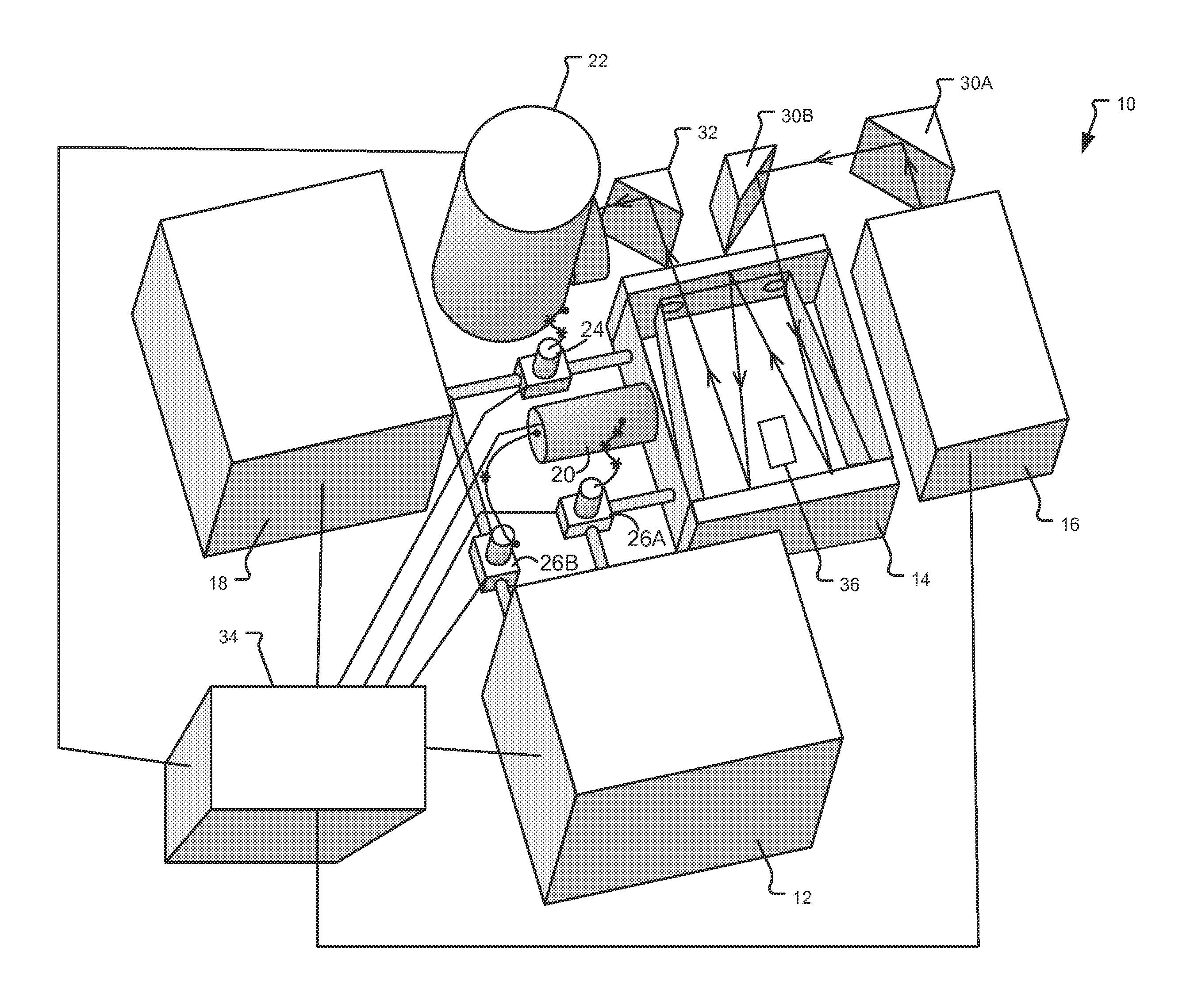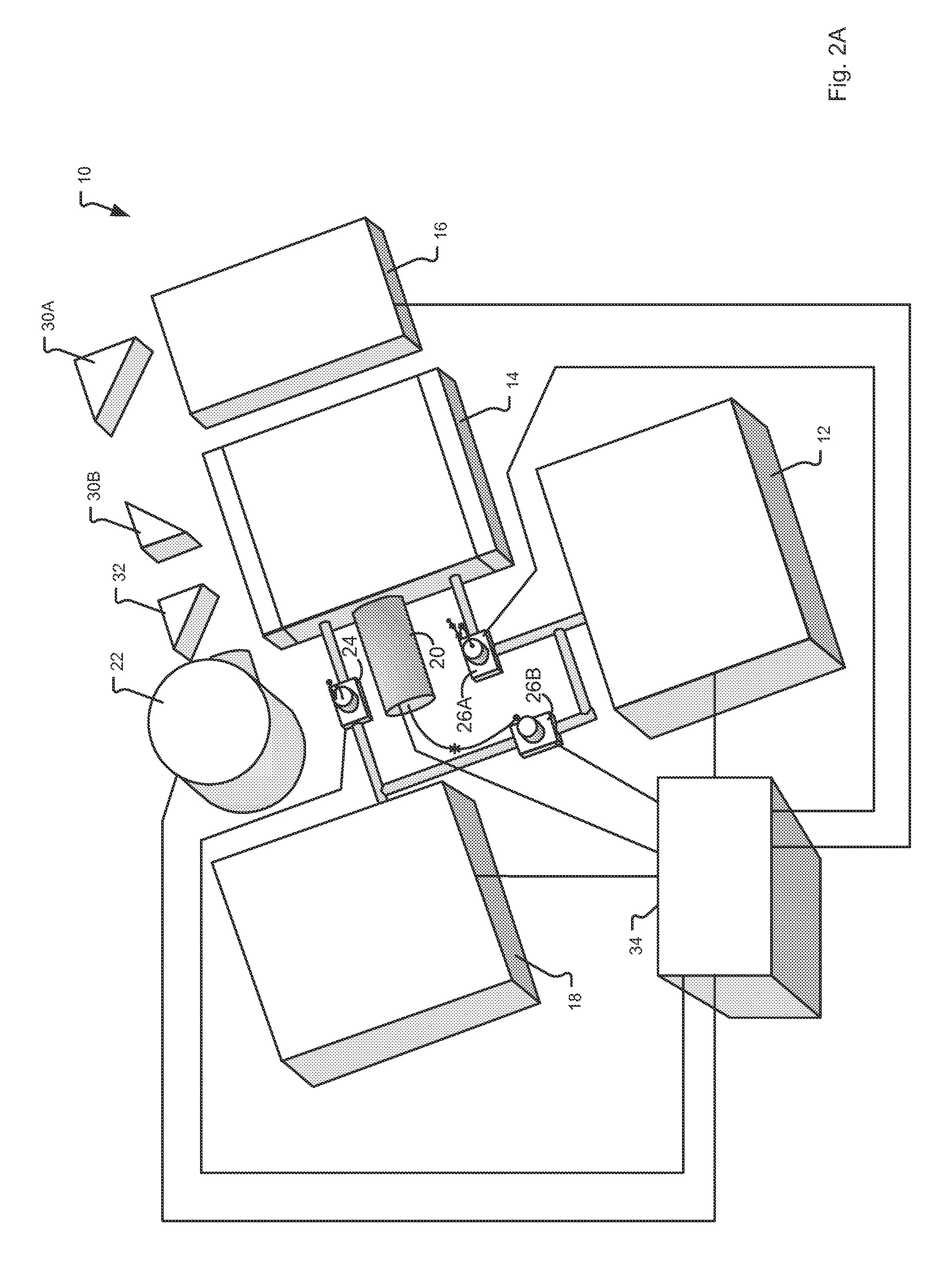Process and system for rapid sample analysis
a sample analysis and sample technology, applied in the field of process and system for rapid sample analysis, can solve the problems of short path length limit, and the sensitivity of the technique, and achieve the effect of low detection limit, low mdl, and low cos
- Summary
- Abstract
- Description
- Claims
- Application Information
AI Technical Summary
Benefits of technology
Problems solved by technology
Method used
Image
Examples
example 1
[0242]In a conventional GC-FTIR configuration, the gas leaves the GC and passes through the FTIR gas cell (usually a light pipe that is generally around 10 to 20 cm long) in a few seconds. If the concentration of a chemical compound is high enough, what is observed is a peak that rises and then falls, a behavior typical of any other detector. In contrast, using a system such as the system of FIGS. 2A and 2B, the gas can be collected in the gas cell for integration of each peak eluted from the GC.
[0243]A multiple path length gas cell can be utilized to generate a much higher absorbance since in the configuration described herein response time of the gas through the cell is not a concern. The absorbance increases linearly with the increased path length. Thus increasing the path length from a length of 10 cm (the actual length of the cell) to a multiple path of 5 m will produce a 50 times greater absorbance, assuming the same concentration in the in the sample cell described herein and...
example 2
[0257]These experiments were undertaken to demonstrate spectral aspects of the techniques described herein. A couple of screenshots of the fingerprint region of the IR spectrum from 550-1250 cm−1 were taken to demonstrate how the spectra change after post processing as described herein.
[0258]The graph in FIG. 9 is a final raw spectrum after a mixture of 60+ gases (compounds) is collected in the gas cell. Many of the gases were chlorinated and have strong absorption peaks at the low frequency end of the spectrum. All the features observed below 850 cm−1 are absorption peaks by some of the 60+ compounds. The peak PQR structure at 950-1150 cm−1 is indicative of the methanol which was the solvent.
[0259]Trying to analyze a spectrum for 60+ compounds with existing techniques, even when possible, proves to be exceedingly difficult, especially if identifying other unknowns is also desired.
[0260]If, however, protocols or algorithms described herein are applied across the data and inspecting ...
PUM
| Property | Measurement | Unit |
|---|---|---|
| volumes | aaaaa | aaaaa |
| volume | aaaaa | aaaaa |
| flow rates | aaaaa | aaaaa |
Abstract
Description
Claims
Application Information
 Login to View More
Login to View More - R&D
- Intellectual Property
- Life Sciences
- Materials
- Tech Scout
- Unparalleled Data Quality
- Higher Quality Content
- 60% Fewer Hallucinations
Browse by: Latest US Patents, China's latest patents, Technical Efficacy Thesaurus, Application Domain, Technology Topic, Popular Technical Reports.
© 2025 PatSnap. All rights reserved.Legal|Privacy policy|Modern Slavery Act Transparency Statement|Sitemap|About US| Contact US: help@patsnap.com



